How to Inflate Tires Using an Air Compressor

Properly inflated tires are essential for a smooth and safe driving experience. With the help of an air compressor, you can easily inflate your tires to the correct pressure. In this article, we will guide you through the step-by-step process of how to inflate your tires using an air compressor.
Step 1: Gather the necessary equipment
Before you begin, make sure you have all the necessary equipment. This includes an air compressor, a tire pressure gauge, and the correct inflation nozzle for your tires. Having the right equipment is crucial for an accurate and efficient inflation process.
Step 2: Check the recommended tire pressure
It is important to know the recommended tire pressure for your specific vehicle. This information can usually be found in your car’s owner’s manual or on a sticker located on the driver’s side door jamb. Make a note of the recommended pressure as you will need this information later.
Step 3: Prepare the air compressor
Connect the air compressor to a power source and ensure that it is in working condition. Adjust the regulator on the air compressor to match the recommended tire pressure. This will prevent overinflation and ensure that you inflate the tires to the correct pressure.
Step 4: Connect the inflation nozzle
Attach the correct inflation nozzle to the air compressor hose. The nozzle should fit securely onto the valve stem of the tire. Ensure that it is properly connected to avoid any leaks during the inflation process.
Step 5: Inflate the tires
Hold the inflation nozzle firmly onto the valve stem and turn on the air compressor. Monitor the pressure gauge closely and inflate the tire in short bursts. Check the pressure gauge frequently to prevent overinflation. Once the tire reaches the recommended pressure, turn off the air compressor and remove the inflation nozzle.
Step 6: Check the tire pressure
After inflating the tire, use the tire pressure gauge to double-check the pressure. If it is not at the recommended level, adjust it accordingly using the air compressor. Repeat this process for each tire that needs to be inflated.
Step 7: Disconnect the air compressor
Once you have finished inflating all the tires, disconnect the air compressor from the power source. Store the equipment properly and ensure that no air is being released from the tires.

By following these simple steps, you can easily and safely inflate your tires using an air compressor. Remember to check your tire pressure regularly to ensure optimal performance and safety on the road.
Preparing to Inflate Tires
Before you start inflating your tires using an air compressor, there are a few preparations you need to make to ensure a smooth process. Proper preparation can help prevent accidents and damage to both your tires and the air compressor.
1. Check the recommended tire pressure
It’s important to know the recommended tire pressure for your specific vehicle. This information can typically be found in your vehicle’s owner’s manual or on a sticker located on the driver’s side door jamb. The recommended tire pressure is measured in pounds per square inch (PSI) and may vary depending on the type of tire and the vehicle’s load.
2. Assess the current tire pressure
Before inflating your tires, it’s a good idea to check their current pressure. You can do this using a tire pressure gauge, which can be purchased at most automotive stores. By assessing the current tire pressure, you’ll be able to determine how much air needs to be added and prevent overinflation.
3. Gather the necessary equipment
Make sure you have all the necessary equipment before starting the inflation process. This includes an air compressor with the appropriate air hose and valve attachment, a tire pressure gauge, and any additional tools needed to access the tire valve, such as a valve cap removal tool or valve extender.

4. Position the vehicle
Park your vehicle on a flat and stable surface to ensure safety during the inflation process. Engage the parking brake and keep the vehicle in park or in gear, depending on whether it has an automatic or manual transmission. Position the vehicle in a way that allows easy access to all tires, making it convenient to connect the air hose to the valve.
5. Remove the valve cap
Before connecting the air hose to the tire valve, remove the valve cap. This cap helps keep dirt and debris out of the valve, but it must be removed for air to flow freely during inflation. Keep the valve cap in a safe place to avoid losing it.
6. Inspect the tire condition
Take a moment to inspect the condition of the tire before inflating it. Look for any visible signs of damage, such as cuts, bulges, or punctures. Inflating a damaged tire can be dangerous and may cause further harm. If you notice any significant damage, it’s best to consult a professional tire technician.
By following these preparation steps, you’ll be ready to safely and effectively inflate your tires using an air compressor. Remember to always prioritize safety and adhere to the recommended tire pressure.
Gathering Necessary Materials
Before you start inflating your tires using an air compressor, it is important to gather all the necessary materials to ensure a smooth and efficient process. Here are the materials you will need:

- An air compressor: Make sure you have access to a reliable air compressor that is capable of inflating tires. Check the specifications to ensure it has the appropriate pressure range.
- A pressure gauge: This tool is essential for accurate tire inflation. It allows you to monitor the tire pressure and ensure that it is within the recommended range.
- A tire chuck: This is a connector that attaches to the tire valve stem. It allows the air compressor to deliver air into the tire.
- A tire inflator hose: This is a flexible hose that connects between the tire chuck and the air compressor. It should be long enough to reach each tire comfortably.
- Tire valve caps: These small caps protect the valve stem from dust and debris. It is important to have them handy to prevent any damage or contamination to the valve stem.
By gathering these materials beforehand, you will be well-prepared to inflate your tires using an air compressor efficiently and effectively.
Checking Tire Pressure
Checking your tire pressure regularly is an important part of maintaining your vehicle. Proper tire pressure ensures optimal performance, improves fuel efficiency, and enhances safety on the road. Here are a few steps to follow when checking your tire pressure:
- Get a tire pressure gauge: To accurately measure your tire pressure, you’ll need a tire pressure gauge. There are different types available, including digital and analog gauges. Choose one that suits your preference.
- Refer to your vehicle’s manual: Consult your vehicle’s manual or the sticker on the door jamb to find the recommended tire pressure for your specific vehicle. The recommended pressure can differ for the front and rear tires.
- Remove the valve cap: Unscrew the valve cap from the valve stem of each tire. Keep the cap in a safe place to avoid losing it.
- Press the tire pressure gauge onto the valve stem: Press the tire pressure gauge onto the valve stem firmly and evenly. You should hear a slight hissing sound as air escapes and the gauge’s reading starts to stabilize.
- Read the tire pressure: Look at the gauge’s display or scale to determine the current tire pressure. Compare it to the recommended pressure and note if any adjustments are necessary.
- Adjust the tire pressure if needed: If the tire pressure is too low, use an air compressor to add air. If the pressure is too high, use the gauge’s pressure release valve to let some air out. Repeat the process until you achieve the recommended pressure.
- Replace the valve cap: After adjusting the tire pressure, screw the valve cap back onto the valve stem tightly. This helps prevent dirt and debris from entering the valve stem and causing leaks.
By regularly checking your tire pressure and maintaining the recommended levels, you can ensure that your tires are properly inflated and enjoy a smooth and safe driving experience.
Choosing the Right Air Compressor
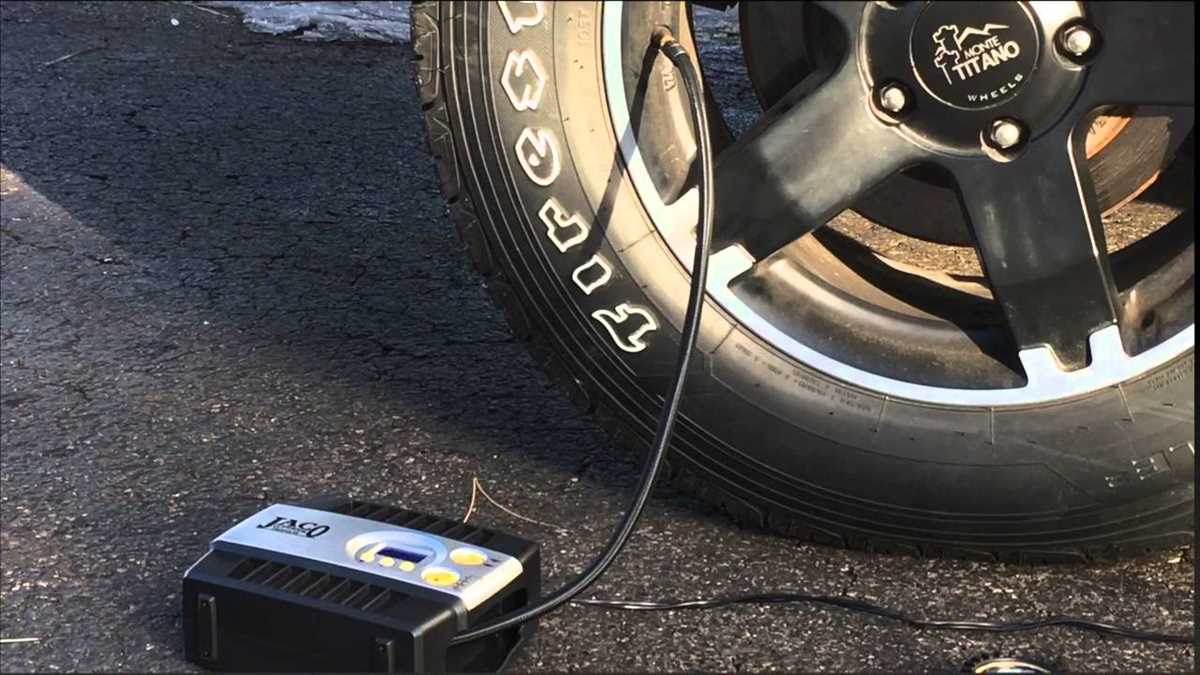
When it comes to inflating tires, having the right air compressor is essential. There are a few factors to consider when choosing an air compressor for this task.
Type of air compressor
There are different types of air compressors available, including reciprocating, rotary screw, and centrifugal. For inflating tires, a reciprocating compressor is typically the best choice. Reciprocating compressors use pistons to compress air and are suitable for smaller tasks like inflating tires.
Air pressure and flow rate
It’s important to consider the air pressure and flow rate of an air compressor. The air pressure is measured in pounds per square inch (PSI), while the flow rate is measured in cubic feet per minute (CFM). When inflating tires, a compressor with a PSI range of 80-120 is sufficient. The CFM rating will depend on the size of the tires and the desired inflation speed.
Tank size
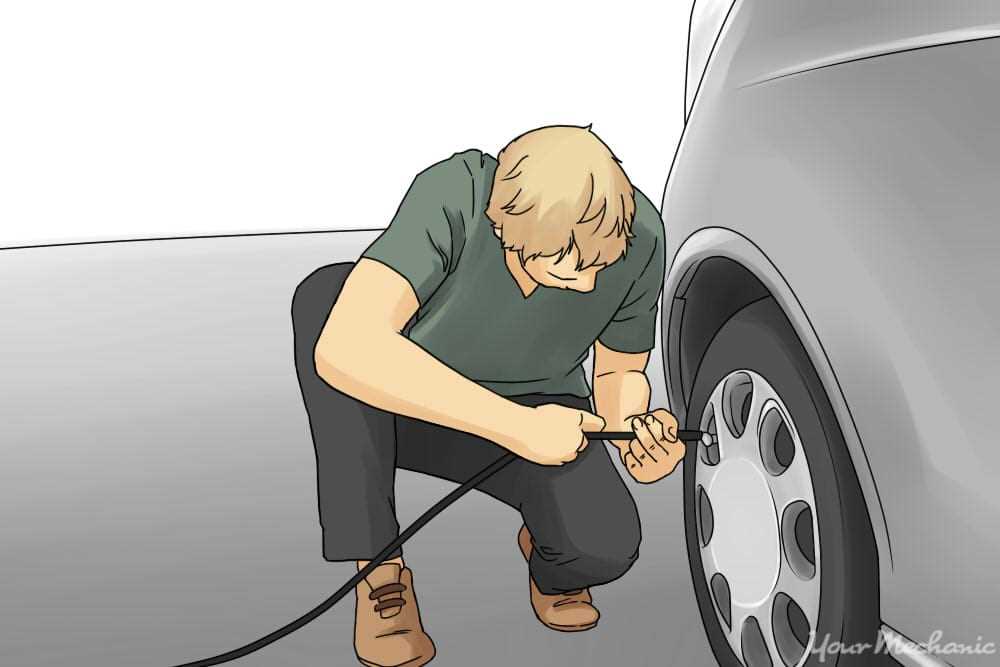
If you plan on inflating multiple tires or larger tires, it’s beneficial to have an air compressor with a larger tank size. A larger tank will allow for longer periods of continuous use without needing to wait for the tank to refill with compressed air.
Portability and noise level
Consider the portability of the air compressor, especially if you need to inflate tires on the go. Look for compressors with wheels and handles for easy transportation. Additionally, consider the noise level of the compressor if you plan on using it in a residential area or indoors. Some compressors have noise-reducing features, which can be beneficial.
Overall, choosing the right air compressor for inflating tires involves considering the type of compressor, air pressure and flow rate, tank size, portability, and noise level. By evaluating these factors, you can select an air compressor that meets your specific needs for tire inflation.
Understanding PSI and CFM
When it comes to using an air compressor to inflate tires, it’s important to understand two key measurements: PSI and CFM. These measurements are crucial in determining the performance and effectiveness of the air compressor.
PSI:
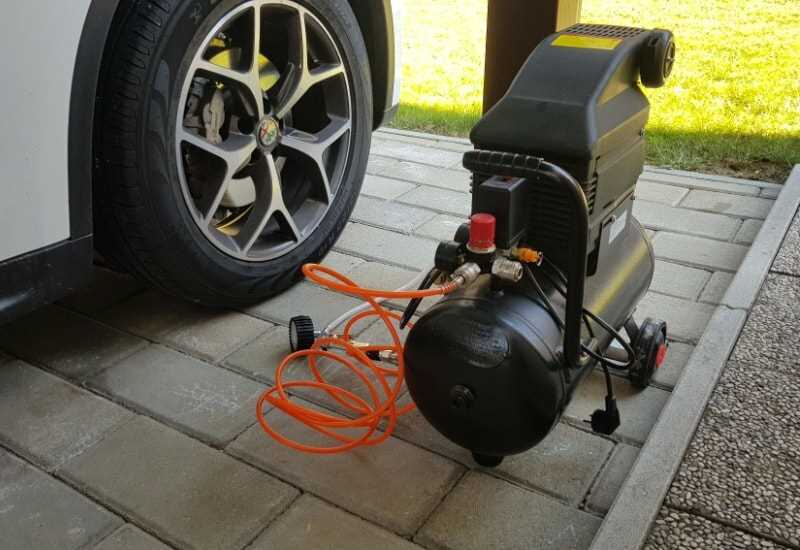
PSI, or pounds per square inch, is a measurement of air pressure. In the context of inflating tires, PSI refers to the amount of pressure that is being transferred to the tire. Most car tires require a PSI of around 30-35, while larger tires like those on trucks or SUVs may require a higher PSI.
It’s important to check the recommended PSI for your specific tires before inflating to ensure that you don’t over or underinflate them. Overinflating can cause the tires to wear out faster and increase the risk of a blowout, while underinflating can negatively affect the vehicle’s handling and fuel efficiency.
CFM:
CFM, or cubic feet per minute, is a measurement of the volume of air that an air compressor can deliver. In the context of inflating tires, CFM determines how quickly the compressor can deliver air to the tire. A higher CFM rating means that the compressor can inflate the tire more quickly.
However, it’s important to note that the CFM rating of the air compressor should be higher than the CFM required by the tire. If the CFM rating of the compressor is lower than what the tire requires, it will take longer to inflate the tire and may not provide enough pressure.
- To ensure that you have the right amount of PSI and CFM for inflating your tires, it’s recommended to check the specifications of your air compressor and the manufacturer’s recommendations for your tires.
- Additionally, it’s always a good idea to double-check the PSI and monitor it while inflating the tires to avoid overinflation.
Selecting an Air Compressor with the Right Features
Consider the Required PSI
When selecting an air compressor for inflating tires, it is important to consider the required PSI (pounds per square inch). Each tire has a recommended PSI, which can usually be found on the sidewall of the tire or in the vehicle’s manual. The air compressor should be able to generate the necessary pressure to reach the recommended PSI for your specific tires.
Look for Portability
If you often need to inflate tires while on the go, it is essential to consider the portability of the air compressor. Look for a compact and lightweight option that is easy to transport and store. Some models come with built-in handles or wheels, making them even more convenient for travel.
Check the Tank Size
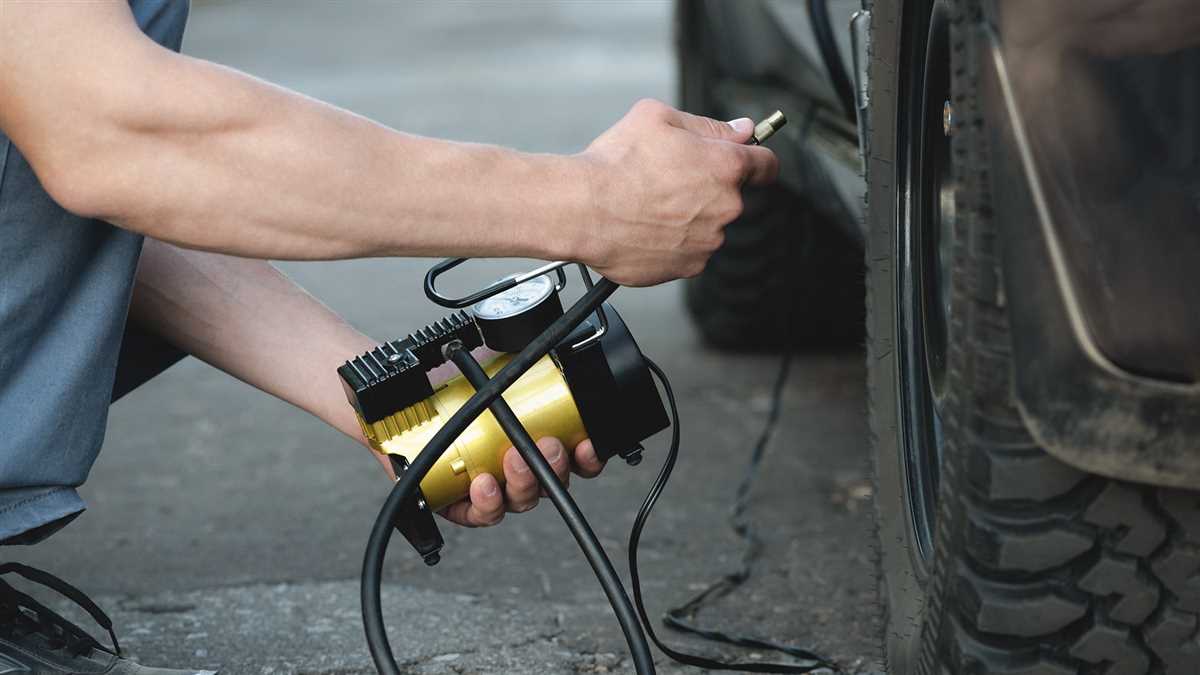
The tank size of an air compressor determines its storage capacity. When inflating tires, a larger tank size can be beneficial as it allows for continuous airflow without frequent pauses for the tank to refill. However, keep in mind that larger tanks may also mean a heavier and bulkier air compressor, which may not be suitable for everyone.
Consider Noise Levels
Some air compressors can be quite loud, which can be bothersome if you plan to use them in a residential area or during quiet hours. Look for air compressors that are designed with noise reduction features, such as insulated cabinets or rubber feet, to minimize noise levels. This will ensure a more comfortable and peaceful tire inflation process.
Check the Power Source
When selecting an air compressor, consider the available power sources. While some models rely on electricity, others can be powered by batteries or even a car’s cigarette lighter. Choose an air compressor that aligns with your accessibility to power sources and suits your specific needs.
In conclusion, selecting an air compressor with the right features is crucial for efficient tire inflation. By considering factors such as the required PSI, portability, tank size, noise levels, and power source, you can find an air compressor that meets your requirements and makes tire inflation a breeze.
Inflating Tires Safely
When it comes to inflating tires, safety should always be a top priority. Properly inflated tires not only ensure optimal performance but also contribute to vehicle safety. Here are a few tips to help you inflate your tires safely using an air compressor.
1. Check the manufacturer’s recommendations
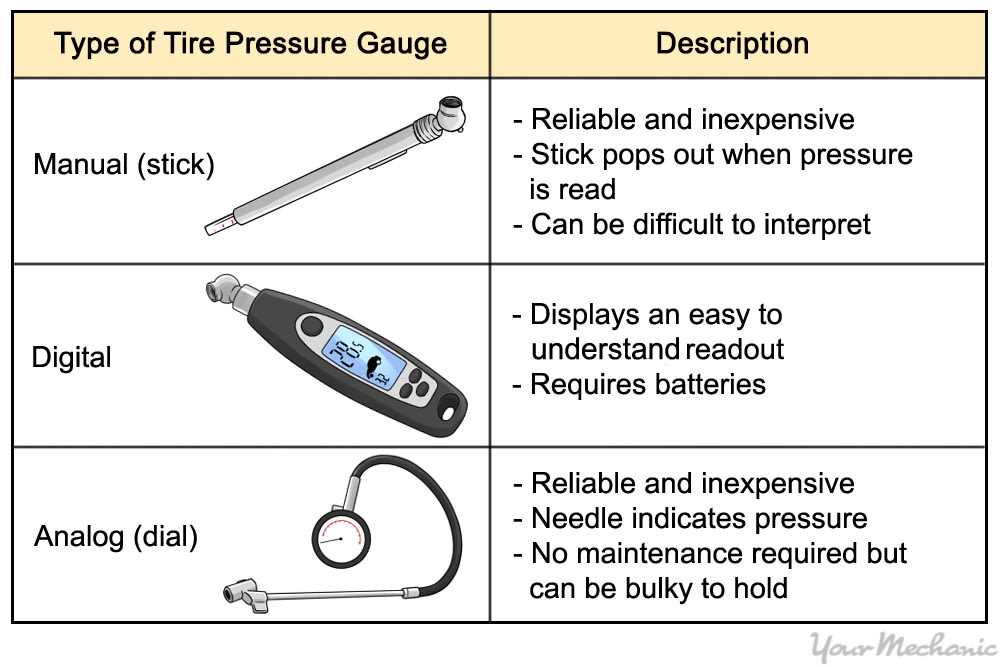
Before you begin inflating your tires, it’s important to check the manufacturer’s recommendations for the proper tire pressure. This information can usually be found in your vehicle’s owner’s manual or on a sticker located on the driver’s side door jamb. Inflate your tires to the recommended pressure to ensure safe driving conditions and to prevent damage to the tires.
2. Inspect the tires for any damage or wear
Prior to inflating your tires, take a moment to inspect them for any signs of damage or excessive wear. Look for any cuts, bulges, or uneven tread wear. If you notice any issues, it’s best to have the tires inspected by a professional before attempting to inflate them.
3. Use the correct attachments
When connecting your air compressor to the tire valve, make sure to use the appropriate attachment. Most air compressors come with a variety of attachments, including a standard nozzle and a threaded nozzle. Choose the attachment that fits securely onto the tire valve to ensure a proper seal and prevent air leakage.
4. Inflate the tires in small increments
When inflating your tires, it’s important to do so in small increments. This will prevent over-inflating the tires and minimize the risk of a blowout. Use a tire pressure gauge to regularly check the pressure as you inflate the tires, and stop once you reach the recommended pressure.
5. Monitor the temperature
Keep in mind that tire pressure can fluctuate with changes in temperature. As the temperature rises, the pressure in your tires may increase. It’s important to regularly check the tire pressure and adjust it if necessary to ensure safe driving conditions.
Follow these guidelines to ensure that you are safely inflating your tires using an air compressor. By taking the necessary precautions and following the manufacturer’s recommendations, you can maintain the proper tire pressure and promote safe driving. Remember, properly inflated tires not only enhance your vehicle’s performance but also contribute to your overall safety on the road.
Locating the Valve Stem
Before inflating your tires using an air compressor, it is important to locate the valve stem on each tire. The valve stem is a small cylindrical metal or rubber tube that protrudes from the wheel. It is typically found on the side or the inside edge of the wheel, near the outer circumference. The valve stem is essential for adding or releasing air from the tire.
To locate the valve stem:
- Inspect the tire: Begin by visually inspecting the tire to identify any visible valve stems. The valve stem is usually covered by a small cap, which may need to be unscrewed to access the valve.
- Check the owner’s manual: If you are unable to locate the valve stem visually, refer to the vehicle’s owner’s manual. The manual will provide detailed information on the location of the valve stem for each tire.
- Use a flashlight: If the valve stem is difficult to see, especially in low light conditions, use a flashlight to illuminate the area around the tire and locate the valve stem more easily.
Once you have located the valve stem on each tire, you are ready to begin inflating the tires using an air compressor.
Attaching the Air Compressor
To inflate your tires using an air compressor, you first need to attach the compressor to the valve stem of the tire. Begin by locating the valve stem, which usually has a small cap on it to protect it from dirt and debris. Remove the cap and set it aside.
Next, take the hose of the air compressor and align it with the valve stem. Make sure the hose is fully inserted into the valve stem to prevent any air leakage. Once the hose is secure, you can lock it in place by tightening the connection between the hose and the valve stem. Use your fingers or a wrench, depending on the type of valve stem you have, to tighten the connection.
Before you begin inflating the tire, it’s important to double-check that the air compressor is turned off. This will prevent any sudden bursts of air or accidents. Once you’ve ensured that the compressor is off, you can move on to the next step of the inflation process.
Monitoring Tire Pressure
Monitoring tire pressure is an important part of maintaining your vehicle’s performance and safety. Properly inflated tires not only improve fuel efficiency, but also provide better traction and handling on the road. To ensure that your tires have the correct pressure, it is crucial to regularly check and monitor them.
Checking Tire Pressure
To check your tire pressure, you will need a tire pressure gauge. This tool measures the air pressure inside the tire. Start by removing the valve cap from the tire valve. Insert the tire pressure gauge into the valve and press firmly to get an accurate reading. The gauge will display the pressure in PSI (pounds per square inch) or kPa (kilopascals).
Recommended Pressure
Every vehicle has a recommended tire pressure, which can usually be found in the owner’s manual, the driver’s side door jamb, or inside the fuel filler flap. It is important to follow this recommendation for optimal performance and safety. Overinflated tires can lead to a harsh and uncomfortable ride, while underinflated tires can cause poor handling and even tire failure.
Frequency of Checking
It is recommended to check your tire pressure at least once a month and before long trips. This will help you catch any changes in pressure that may indicate a potential problem. Additionally, extreme weather conditions can affect tire pressure, so checking after temperature fluctuations is also important.
Monitoring System
Some vehicles are equipped with a tire pressure monitoring system (TPMS), which can provide real-time information about tire pressure. This system uses sensors in the tires to send data to a dashboard display. If your vehicle has a TPMS, it is still recommended to manually check tire pressure regularly as sensors can malfunction or batteries can die.
Tire Pressure Maintenance Tips
Proper tire maintenance goes beyond just monitoring pressure. It is also important to visually inspect the tires for any signs of damage or wear, such as uneven tread wear or bulges. Regularly rotating the tires and ensuring they are properly aligned and balanced will help prolong their lifespan and improve overall performance.
By regularly monitoring tire pressure and following recommended maintenance practices, you can keep your tires in optimal condition and ensure a safe and comfortable driving experience.
FAQ:
What is the recommended tire pressure for cars?
The recommended tire pressure for cars is usually listed on a sticker inside the driver’s side door jamb or in the owner’s manual. It can vary depending on the make and model of the vehicle, but it is typically around 32-35 psi.
Can I use an air compressor to inflate bicycle tires?
Yes, you can use an air compressor to inflate bicycle tires. However, it is important to be careful and use a low pressure setting to avoid overinflating the tires and causing damage.
How do I connect the air compressor to the tire valve?
To connect the air compressor to the tire valve, first remove the valve cap from the tire. Then, press the connector of the air compressor firmly onto the valve stem and make sure it is secure. You may need to hold it in place while inflating the tire.
Is it necessary to check the tire pressure after inflating them?
Yes, it is important to check the tire pressure after inflating them. Sometimes the tire pressure can vary slightly even after using an air compressor, so it’s a good idea to use a tire pressure gauge to ensure that the pressure is within the recommended range.
Video:








